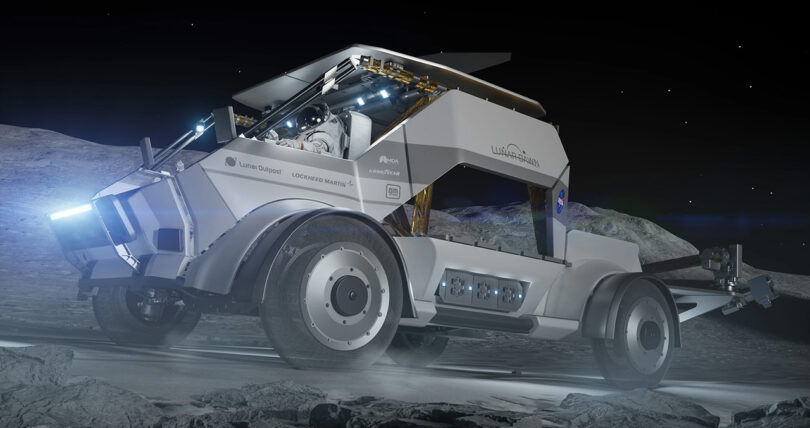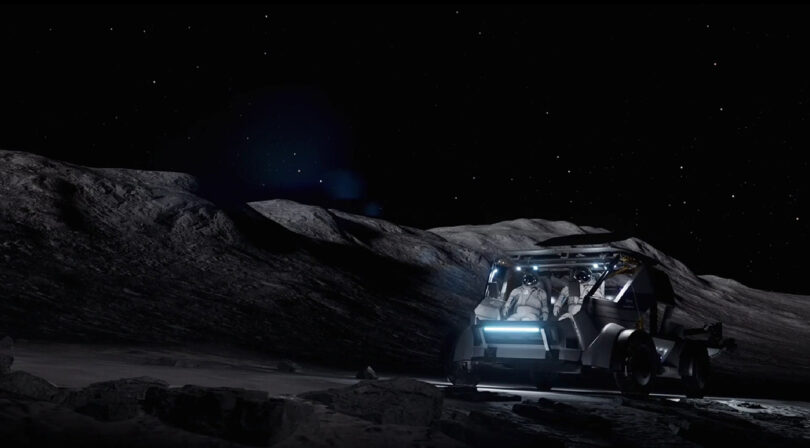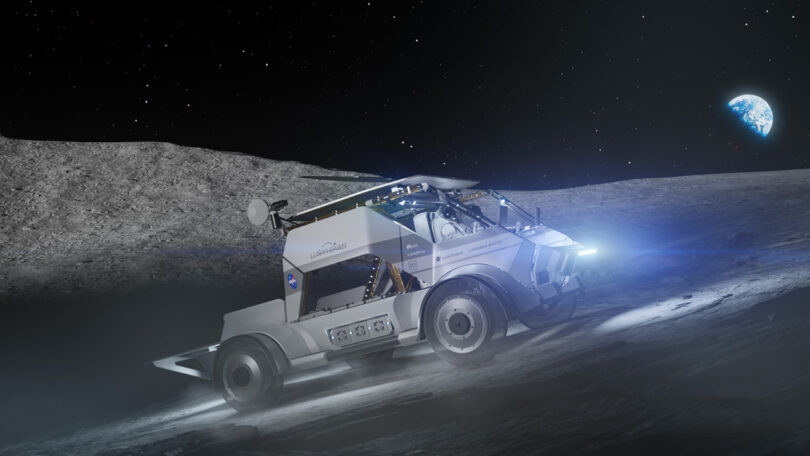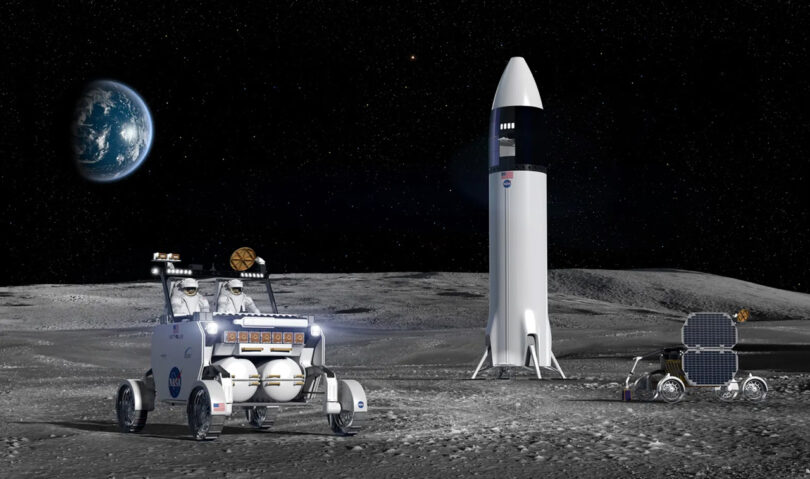
[ad_1]
In 2029, NASA plans to embark on a mission back to the Moon – humanity’s first lunar surface expedition in more than 50 years – and that team of Artemis 5 astronauts will rely on the services of a Lunar Terrain Vehicle (LTV) to get around its challenging rocky surface to conduct research. NASA has narrowed the field down to three companies, each vying to shape the future of lunar rover design.
“The goal is to be able to conduct research with astronauts, move astronauts around, help them get to locations they wouldn’t otherwise be able to reach, and then to conduct continued exploration and science after they’ve departed,” said Jacob Bleacher, chief exploration scientist at NASA Headquarters.



First is the Lunar Dawn rover being developed by the team driven startup Lunar Outpost bolstered by expertise from Lockheed Martin and MDA Space regarding robotics and spacecraft design, General Motors for battery technology, and Goodyear for specialized lunar-landscape tires. The collaborative efforts will result in a machine that accommodates astronauts venturing onboard as well as its own autonomous missions.

Intuitive Machines’ sleek and low profile Moon R.A.C.E.R. (Reusable Autonomous Crewed Exploration Rover) represents a joint effort between global team partners AVL, Boeing, Michelin, and Northrop Grumman. The partnership’s Lunar Terrain Vehicle is set to be equipped with advanced power management, autonomous driving, communications, and navigation systems for lunar exploration. Beyond its sporty dune buggy silhouette, automotive enthusiasts will likely notice the rover is pictured rolling on a set of Michelin airless tires, a technology that has come a long way since its earliest 3D-printed iteration and might soon find its way on Earth’s terra firma.


Astrolab has already built a fully functional terrestrial FLEX rover prototype and tested it in the California Death Valley desert.
Venturi Astrolab is teamed up with Axiom Space and Odyssey Space Research to further refine the design of their clunky and funky modular FLEX (Flexible Logistics and Exploration) rover, not only for the 2029 lunar mission but also with ambitions for use on Mars. What the oversized shopping cart design lacks aesthetically, it makes up for its highly capable and versatile modular payload carrying system rated for a maximum combined rover and cargo mass of more than two tons.
NASA will eventually chose one of these three “feasibility phase” designs to eventually deliver a Lunar Terrain Vehicle (LTV) to the moon’s south polar region, where the winning rover will be tested remotely before the Artemis 5 mission astronauts make their official landing.
To follow future launches and landings visit nasa.gov.

Gregory Han is a Senior Editor at Design Milk. A Los Angeles native with a profound love and curiosity for design, hiking, tide pools, and road trips, a selection of his adventures and musings can be found at gregoryhan.com.
[ad_2]